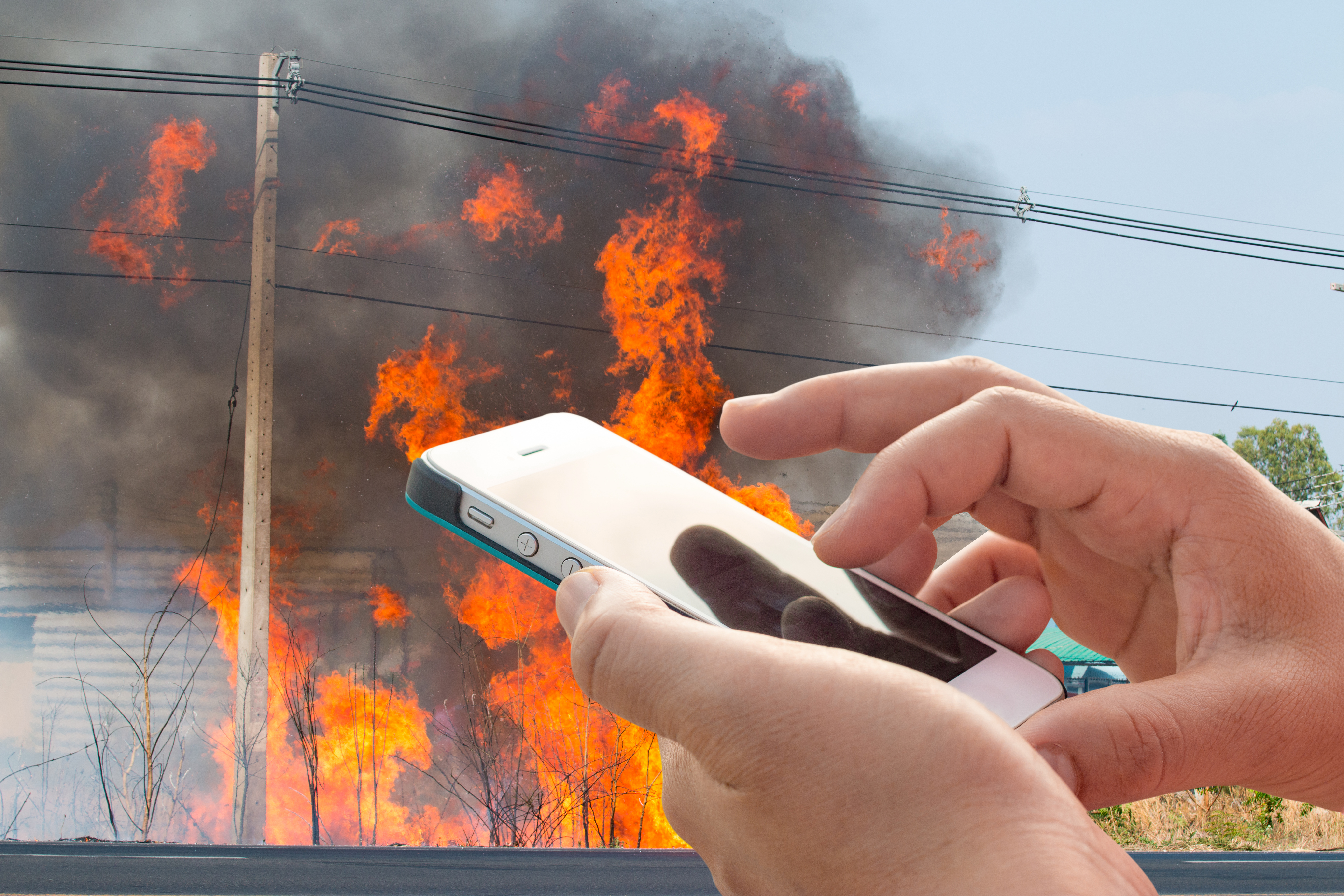How crowdsourced mobile technology can help detect wildfires

Image by Freepik
The 2023 blaze in Lahaina, Hawaii, which claimed more than 100 lives and burnt 6,500 acres of land across Maui, is a tragic example of how rapid wildfire spread can make effective response efforts impossible, resulting in the loss of life and property.
The University of Southern California (USC) computer science researchers have developed a new crowdsourcing system that dramatically slashes wildfire mapping time from hours to seconds using a network of low-cost mobile phones mounted on properties in high-fire threat areas. In computer simulations, the system, FireLoc, detected blazes igniting up to 3,000 feet away and successfully mapped wilderness fires to within 180 feet of their origin.
Detecting wildfires within seconds of ignition
Presented at ACM SenSys on November 5, the paper, titled ‘FireLoc: Low-latency Multi-modal Wildfire Geolocation,’ serves as a proof of concept, according to the researchers. But how would it function in the real world?
“It’s a stepping stone towards broader wildfire mitigation efforts in the future,” said Xiao Fu, lead author and a computer science PhD student.
For the user, it’s simple. Residents and businesses near high-risk areas would install an affordable, weatherproof mobile phone in their backyard or on their building, connect it to a power source, and point the camera toward nearby trees and brush.
Behind the scenes, complex multi-modal analysis and computer vision models process the data gathered from the phone’s basic cameras and sensors to rapidly detect wildfires, often within minutes of ignition.
The system prioritises privacy by focusing on areas with minimal human activity and primarily captures images of vegetation and wilderness. Adapted object localisation techniques also ensure the system zeroes in on fire risks without inadvertently capturing images of people or homes.
Sustainable co-existence with extreme climate
For people who live and work on the periphery of open spaces that traditionally teem with parched fuel sources such as grass, shrubs, and timber, such a rapid response could mean the difference between life and death, or having a home or losing it.
In Southern California, the technology could serve as a model for how to best protect people and homes in wildland-urban interface (WUI) locations such as the Hollywood Hills, the Santa Monica Mountains, and the San Gabriel Valley. What’s more, the entire set-up would cost less than US$100, said Xiao Fu.
“FireLoc envisions a future that we will provide a more effective wildfire response, providing better support in the WUI, and more sustainable coexistence with an extreme climate.” She continued: “It’s a stepping stone towards broader wildfire mitigation efforts in the future.”
The paper is co-authored by Barath Raghavan, Fu’s advisor and an assistant professor of computer science; Peter Bereel, a professor of electrical and computer engineering; and students Yue Hu and Prashanth Sutrave.
Robust testing of wildfire environments
Traditional wildfire detection methods, such as lookouts, satellites, and drones, each have their drawbacks, including high costs, inconvenience, slow response times, and limited battery life. Consequently, firefighters often depend on human observation to spot new fires, which makes it difficult to pinpoint a fire’s exact location.
“This is also very overwhelming for the fire departments, especially in rapidly developing fires like the one in Paradise,” added Fu, referring to the deadly 2018 Camp Fire in Northern California, which killed 85 people.
The team evaluated the effectiveness of their mapping tool by running a simulator based on data from the 2019 Getty Fire, which burnt 745 acres in Los Angeles. By adopting a real-world 3D model of the terrain and simulating realistic wildfire scenarios, they assessed the system’s overall performance, including its ability to accurately localise wildfires and its scalability.
Each camera was positioned to mimic the typical height of a residential second story or rooftop, approximately 30 feet above ground level. The results were clear: By adopting the tool, the researchers successfully detected more than 40 per cent of wildfires in the target area with only four cameras.
“The simulator allows us to have robust testing of wildfire environments. We’re able to control the scalability, such as increasing the number of cameras, is accuracy going to improve? Is coverage going to improve?” Fu said.
Reframing the problem and coming up with a solution
While the location information from the cameras is incredibly important, crowdsourcing plays an equally pivotal role. Requiring only electricity, an Internet connection, and the phone (in a weatherproof holder), the software would automatically take pictures every 30 seconds.
“Given several locations, the system is able to optimise where would be the best location to set up additional cameras for wildfire monitoring," said Fu.
When several cameras detect possible smoke or a fire, they would transmit that information to a cloud server, which stitches the multiple images together using digital elevation models, computer vision techniques, and other sophisticated computing tools.
“This is a complex and critical process,” said Raghavan, Fu’s advisor and an assistant professor of computer science. “But you don’t need high-quality images. An algorithm would determine where the cameras should be placed to optimise coverage,” he added.
“We’re combining all the information from the images in a way that solves the problem,” Raghavan explained. “That’s the solution part of our paper. But we also reframed the problem, that is, how can we map fires as quickly as possible? This paper does both: reframing the problem and coming up with a solution.”
As far as the researchers know, this is the first smart, low-cost crowdsourcing system specifically designed for wildfire detection.
Testing the system in real-world conditions would require community members to mount smartphones on their properties to act as wildfire sensors. The team plans future participatory studies to understand how people would engage with the technology.